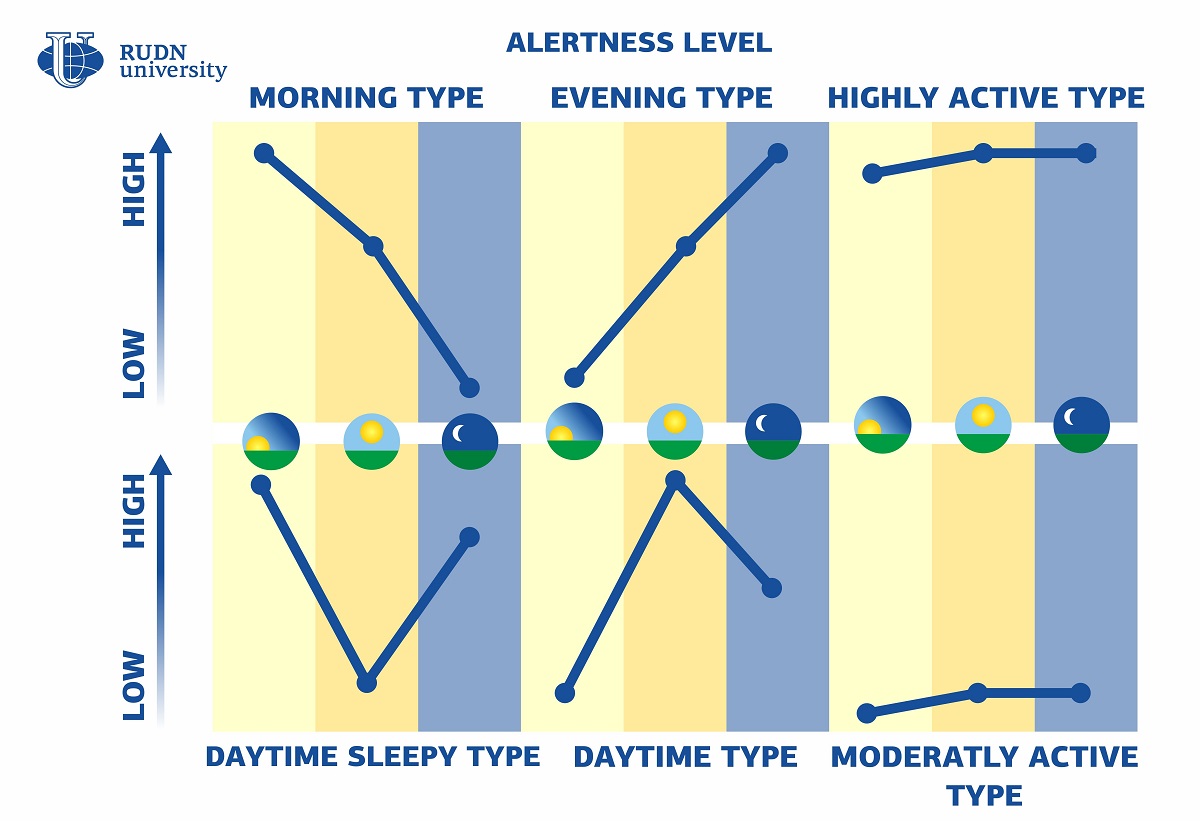The existence of other chronotypes besides "owls" and "larks" has been confirmed

The physiological functions of the body are subordinated to the circadian rhythms - depending on the time of day, a person feels more or less alert, efficient. Two chronotypes are widely known — "larks", most active in the morning, and "owls", more cheerful in the evening. However, there are no clear boundaries between these chronotypes — about 60% of people cannot clearly identify themselves as "owls" or "larks". A group of RUDN University scientists, together with leading domestic and foreign chronobiologists, conducted a large-scale study and identified 4 additional chronotypes that expand the generally accepted classification.
"Studies of individual differences in the fields of chronobiology and chronopsychology are mainly focused on two chronotypes — morning and evening. However, the works of recent years indicate the need to revise and supplement existing ideas. The results of the survey were analyzed, the participants of which chose the most suitable level of daily activity for themselves from six proposed options. Our work is devoted to studying the dynamics of changes in the levels of wakefulness and drowsiness during the day," said Dmitry Sveshnikov, MD, Associate Professor of the Department of Normal Physiology, Medical Institute, RUDN University.
A possible variant of the new classification, expanded to 6 chronotypes, is presented. It is compiled according to the criteria of sleep duration, excessive daytime sleepiness, the ability to wake up or fall asleep as needed at different times of the day. The new classification includes: highly active type (remain active throughout the day), sleepy in the afternoon (active in the morning and evening, but not in the afternoon), daytime (active only during the day) and moderately active type (reduced activity almost uniformly throughout the day).
In a series of online tests conducted, in which 2,283 people took part. 95% of the survey participants attributed themselves to one of the 6 chronotypes. At the same time, only 1/3 of respondents chose either the morning or evening type — 13% and 24%, respectively. The majority of participants chose 4 other types — 15% (daytime), 18% (daytime sleepy type), 9% (highly active type) and 16% (moderately active type).
"Thus, given the high frequency of occurrence of the studied groups with different levels of wakefulness, the hypothesis of the existence of additional chronotypes can be considered proven," Dmitry Sveshnikov.
The results are published in Personality and Individual Differences
The project to develop a cellular model of the placenta became the winner in the Scientific Materials category of the Young Scientists 3.0 competition, organized with the support of the Presidential Grants Foundation and T-Bank.
Ten scientific journals published by RUDN University have been included in the highest level of the state list of scientific publications, the White List.
Forests are not only the lungs of the planet, but also home to millions of species. However, it has remained unclear how underground interactions between trees and fungi affect forest species richness in different climatic conditions. Previous studies have yielded conflicting results: in some regions, the dominance of certain fungi reduced tree diversity, while in others it increased it.
The project to develop a cellular model of the placenta became the winner in the Scientific Materials category of the Young Scientists 3.0 competition, organized with the support of the Presidential Grants Foundation and T-Bank.
Ten scientific journals published by RUDN University have been included in the highest level of the state list of scientific publications, the White List.
Forests are not only the lungs of the planet, but also home to millions of species. However, it has remained unclear how underground interactions between trees and fungi affect forest species richness in different climatic conditions. Previous studies have yielded conflicting results: in some regions, the dominance of certain fungi reduced tree diversity, while in others it increased it.